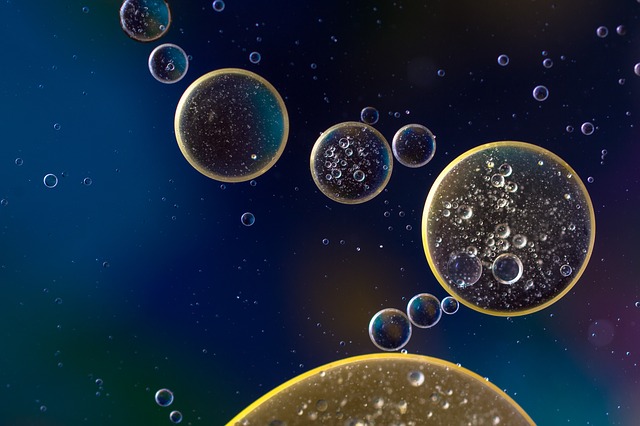There are four major impurities of turbine lubricating oil: Water, oxidation products, gases, and abrasive particles. Generally, water is the biggest cause of oil impurities. The adserve consequences and operating concerns, major sources, and means of removal of water impurities are descrived below.
Sources
1. Absorption of atmospheric moisture
During turbine operation, atmospheric air, which always contains some water vapour, enters the oil system via the bearing oil seals. The in leakage happens because:
- The shaft surface velocity is too large to allow for contact between the shaft and the seal. Thus, a leak path is open.
- Slightly sub-atmospheric pressure is maintained inside the bearing housing and its drain line by the vapour extraction fans installed on the lube oil tank cover. Why this pressure maintained? First to prevent oil mist from escaping past the bearing oil seals into the turbine hall. Second, to prevent accumulation of hydrogen and oil vapour in the lube oil tank atmosphere, which could create an explosion hazard.
During turbine shutdown, the oil tank may be open for inspection, resulting in a large contact area between the oil tank and the humid air in the turbine hall. Because during shutdown, the oil in the tank can be relatively cool, condensation of moisture is promoted.
2. A leaking turbine gland seal
When a gland seal is leaking steam, the humidity of the surrounding air is increased. The humid air enters the adjacent bearing. This is promoted by a very small distance between turbine bearings and the adjacent gland seals.3. A leaking oil cooler
Since water is used for oil cooling, a leaking cooler may result in contamination of oil with water. In most stations, this is prevented during normal operation by maintaining the oil pressure above the cooling water pressure. However, even in these stations, water in leakage can occur during a turbine shutdown when the oil is not pressurized.
Note that this arrangement, where during normal operation oil presuure is maintained above cooling water presuure, can result in oil leak into the cooling water, and it into the environment. To minimize pollution, prompt actions must be taken to locate an stop the leak. Details are left for the station specific training.
Baca juga: Review Weldbrite Pickling Gel
Adserve Consequences and Operating Concerns
The typical adverse consequences and operating concerns caused by the presence of water in lube oil are:
1. Degraded oil properties
Degraded oil properties due to:
- Formation of emulsions whose lubricative properties are lower than those of pure oil.
- Washing out of special oil additives.
- Accelerated oxidation of the oil and its additives.
2. Promoted corrosion and scale formation
Promoted corrosion and scale formation in the equipment to which the oil is supplied.
These consequences result in accelerated wear of equipment such as bearings and generator hydrogen seals. Eventually, bearing or seal failure may occur, forcing a unit outage. The potential for serious damage is increased in the units where turbine oil is used as a hydraulic fluid in the turbine governing system.
Baca juga: Hydropower in Indonesia
Removal
Water is removed from oil by:
1. The lube oil purifier
Depending on the station, the oil purifier is of either the centrifugal or the vacuum treatment type. The former removes free water (due to the difference between the oil and the water densities), but can not separate emulsified or dissolved water. Vacuum purifiers, do not have these limitations.2. The vapour extraction fans
The fans, installed in the lube oil tank cover, remove water vapour that is released from the surface of the hot oil in the tank.3. Drainage from the bottom of the oil tank
This can be done during a long outage when water, being heavier than oil, collects at the tank bottom.Baca juga: Trip to Togean Island, Indonesia
Summary
- Water gets into turbine lube oil due to absorption of humid air. A leaking turbine gland seal or oil cooler, or makeup addition of contaminated oil can be other sources.
- Water degrades oil properties as it forms emulsions, washes out oil additives and accelerates oxidation. Water also promotes corrosion and scale formation in the equipment through which the oil circulated. Accelerated equipment wear and possible failure may result.
- During normal operation, water is removed from the oil by the oil purifier and the vapour extraction fans. During a long outage, water can also be drained from the bottom of the lube oil tank.
Source: Turbine Auxiliaries - Module 10











